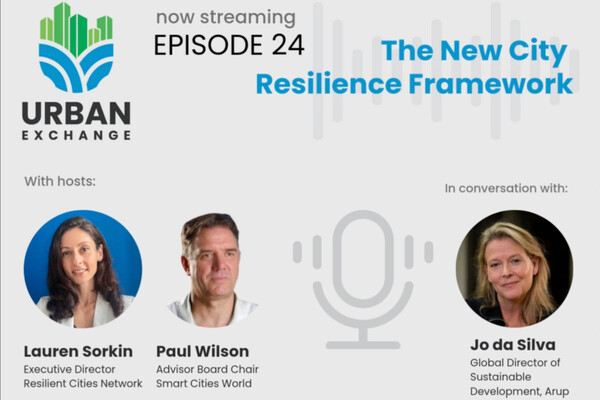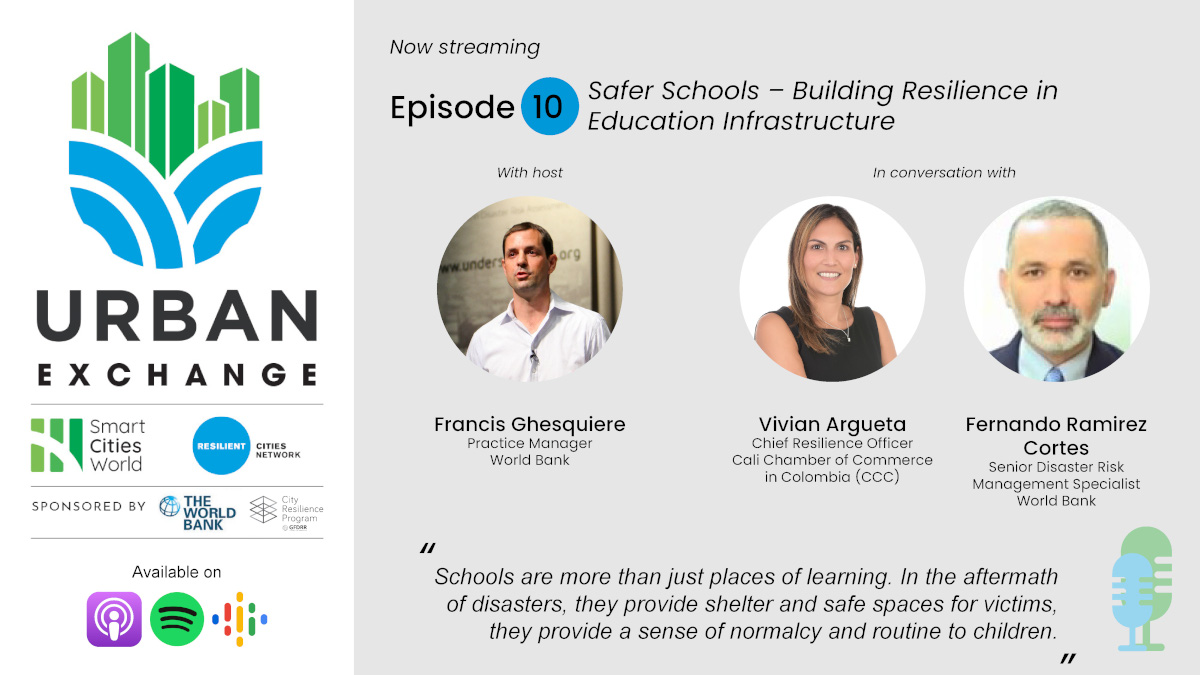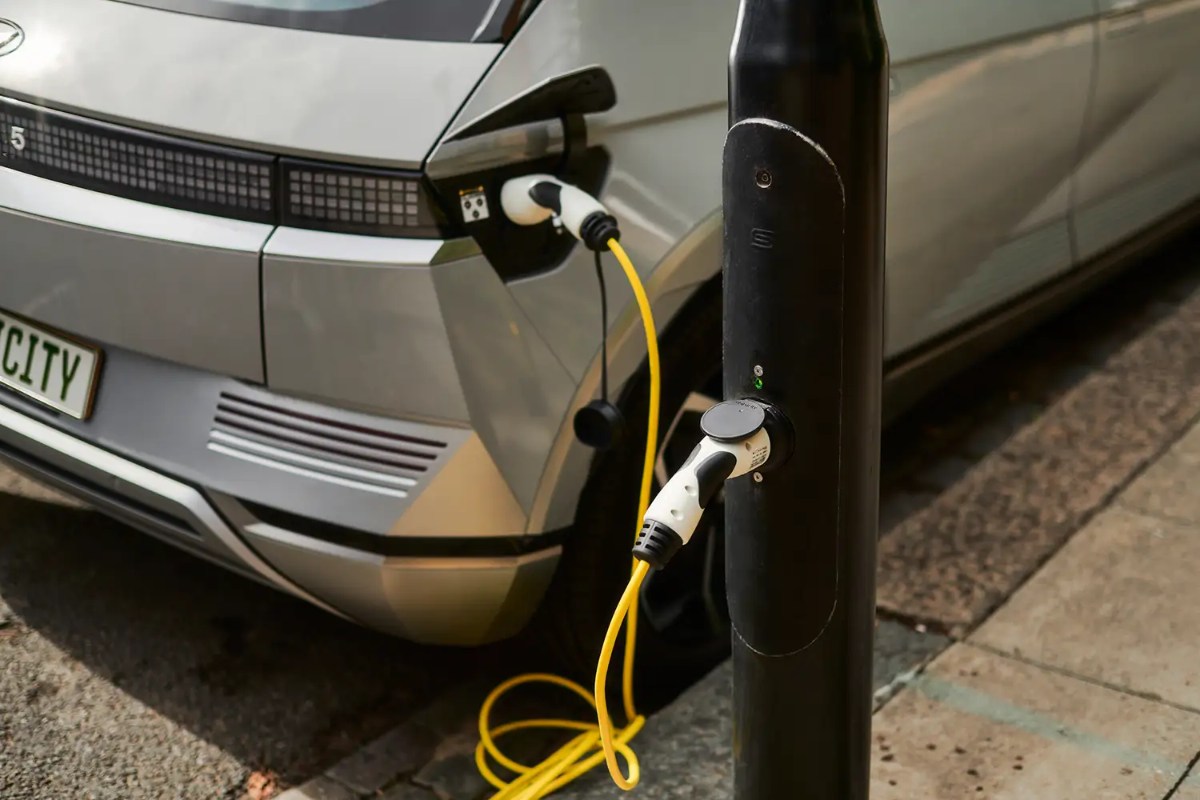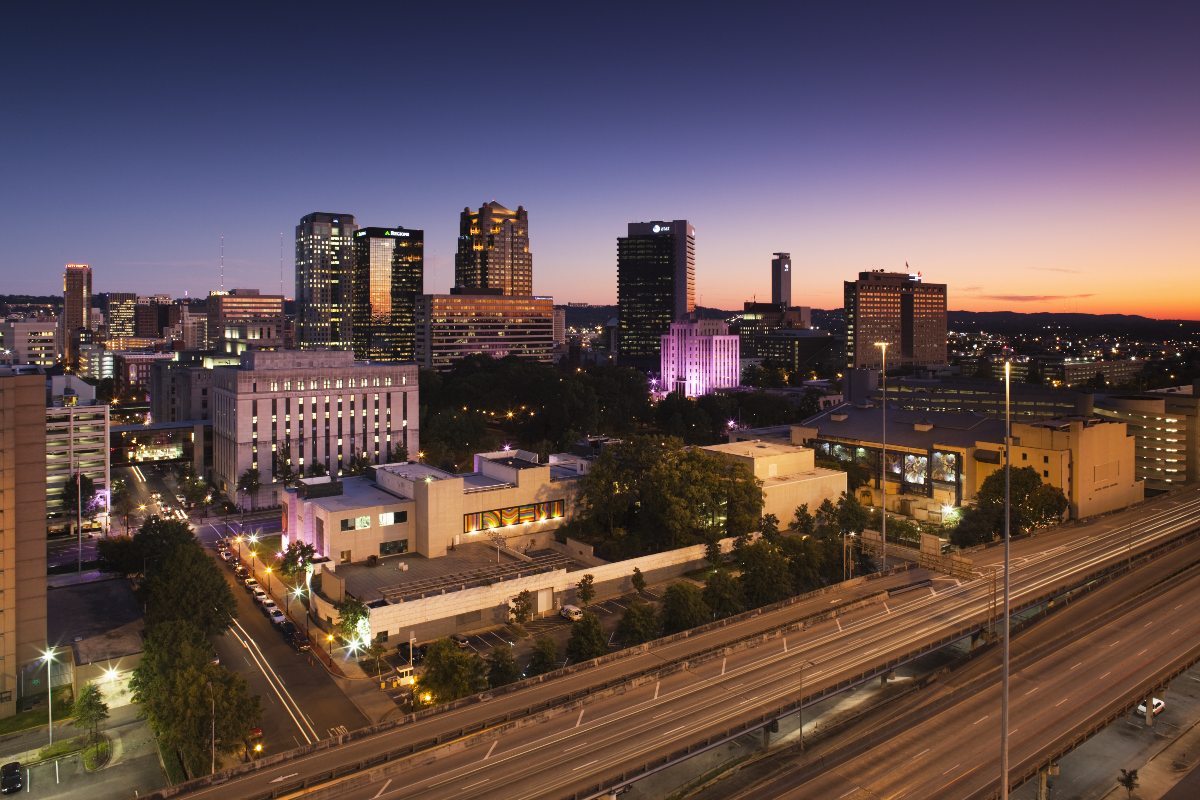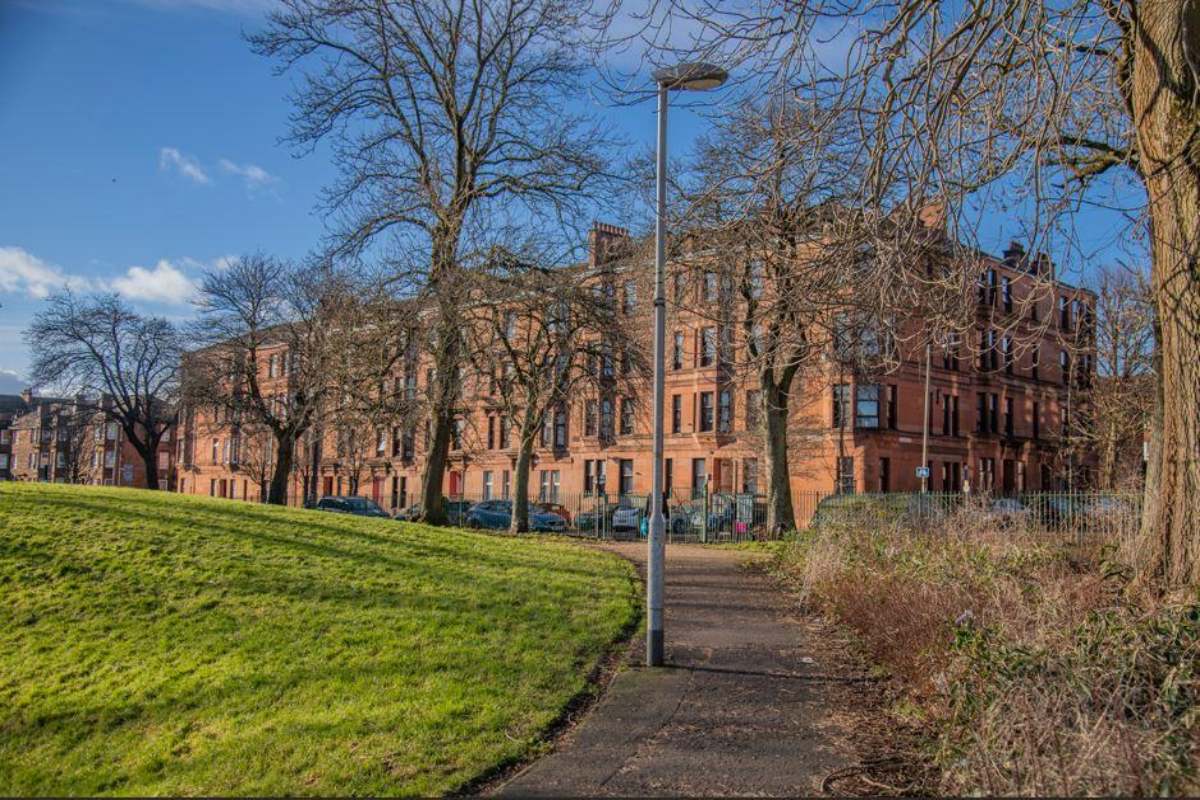Special Reports
SusHi Tech Tokyo 2024: experience ‘Tokyo 2050’ todaySponsored by The SusHi Tech Tokyo 2024 Showcase Program Executive Committee
Urban Exchange Podcast Episode 10 – Safer Schools: Building resilience in education infrastructure
The latest Urban Exchange takes an in-depth look at the challenge to build resilience into schools and the impact it has on the education, health and safety of our children.
As the risks from climate change increase, public school infrastructure in our cities and communities is under threat from natural hazards. It may not be a subject we often think about in connection to education in our cities, but it is regardless a critical issues – one that impacts our children’s present as well as their future.
On this episode of the Urban Exchange, host Francis Ghesquiere from the World Bank welcomes Fernando Ramirez Cortez, Senior Disaster Risk Management Specialist at the World Bank, and Vivian Argueta Bernal, Chief Resilience Office for the Chamber of Commerce in Cali, Colombia.
Together, they take us through the importance of resilient school infrastructure in the face of disaster risk and climate change, providing a working definition of what is meant by infrastructure in this context, before demonstrating the impacts that natural disasters are already having on education, emphasising the 175 million children falling victim to natural disasters every year.
Further, we find out about the World Bank’s Global Program for Safer Schools (GPSS) and how it has established a roadmap for cities to build more resilient schools. Here, we find out about the scale of the programme across 30 countries and 550,000 schools worldwide, the work the programme has done to date, and the impact that’s having on cities, infrastructure, and, most importantly, students.
Specifically, we discover how the programme has extended into Cali’s schools and how it has benefitted the community so far. Beyond that, we also hear how the roadmap has supported Cali in its strategic development to date, given that it lies within an earthquake zone, and the lessons that can be learnt outside education when it comes to infrastructure.






